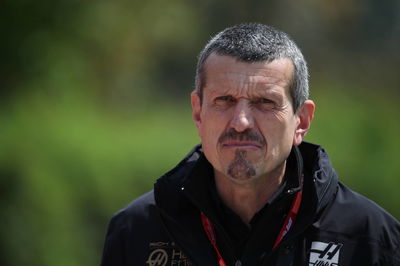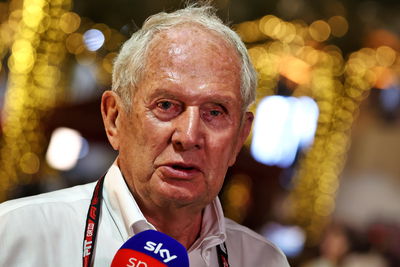Haas in “damage control” despite new parts for race pace woes
Haas team principal Guenther Steiner says his squad will be in “damage control” given its race pace issues on keeping its tyres in the best operating window despite having new parts and setup options to try to solve the problem at the Azerbaijan Grand Prix.
The US team has endured a tough two races having seen its pace drop rapidly compared to its qualifying efforts when both Romain Grosjean and Kevin Magnussen have been regular Q3 contenders before sliding out of the top 10 in the races.

Haas team principal Guenther Steiner says his squad will be in “damage control” given its race pace issues on keeping its tyres in the best operating window despite having new parts and setup options to try to solve the problem at the Azerbaijan Grand Prix.
The US team has endured a tough two races having seen its pace drop rapidly compared to its qualifying efforts when both Romain Grosjean and Kevin Magnussen have been regular Q3 contenders before sliding out of the top 10 in the races.
Steiner says Haas has pinpointed the problem to keeping heat in its tyres over a race stint, which was confirmed during the Bahrain in-season test, and it remains a hurdle his team is struggling to fully overcome during the flyaway races.
“We found out we cannot get the tyres to work as we are running them too cold, it was too late to get anything for China. Our qualifying was good, apart from the Q3 disaster, but then race performance again not good for the same reason in Bahrain,” Steiner said.
“For here we’ve made some parts because we can see the problem in the data and tomorrow we will find out how well they work.
“We will learn something but I wouldn’t say we’ve solved the problem with what we’ve brought along. I’m not too optimistic for the race as I think we’ll still have a problem in the race as we cannot keep them in the ideal working window.”
As a result, Steiner still feels the Baku race will be about Haas limiting its rivals’ advantages as the city street circuit characteristics, with a number of low-speed corners, won’t allow the team to fully utilise its solutions.
“In Barcelona, the testing was good there, so I wouldn’t fear that one, but here we have to try to do damage control,” he said. “It is very difficult to keep temperature in the tyres here, it is the worst track out of all of them.
“I am very cautious here so that’s why we will try to do damage control, but it is very difficult to do here. We knew this was coming but we’ve worked hard to get some solutions to fix it but how well I do not know.
“There is a tendency to have safety cars here too which is worse as when we go behind the safety car we can never get the temperature back. We already struggled with that last year but so does everyone a little bit. If we can get the temperature in the tyres we will be fine.”
Steiner also explained a way to fix its tyre heating issue is to get energy into the wheel rim through braking rather than leaning more on gaining energy through the tyres in corners.
“Getting energy into the wheel rims, you can do that with setup and getting heat from brakes into the wheel and wheel rim,” he said. “We get the energy from the corners, the long corners, where we put a lot of energy into the tyre to make it work which creates heat into the tyres.”











